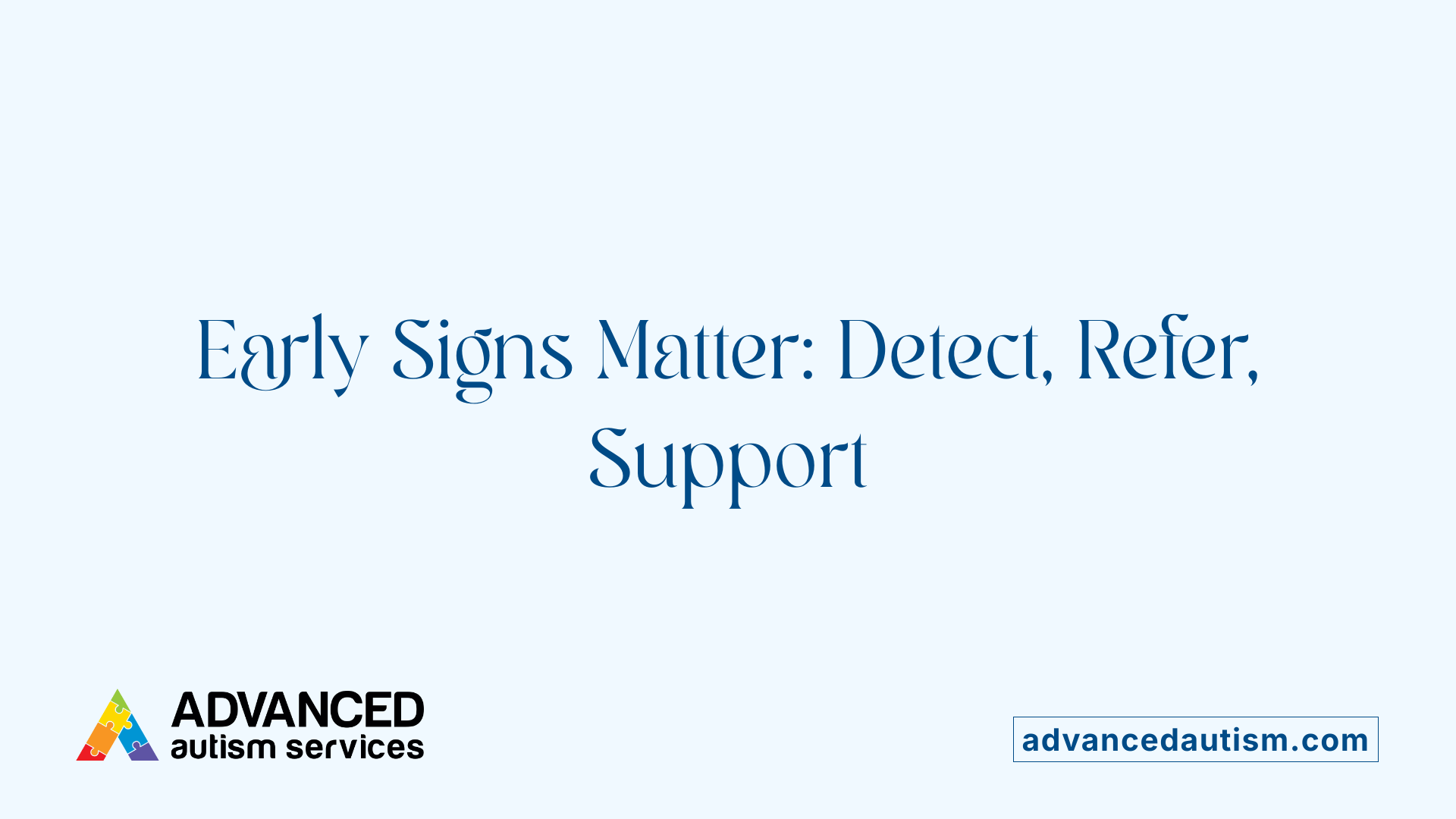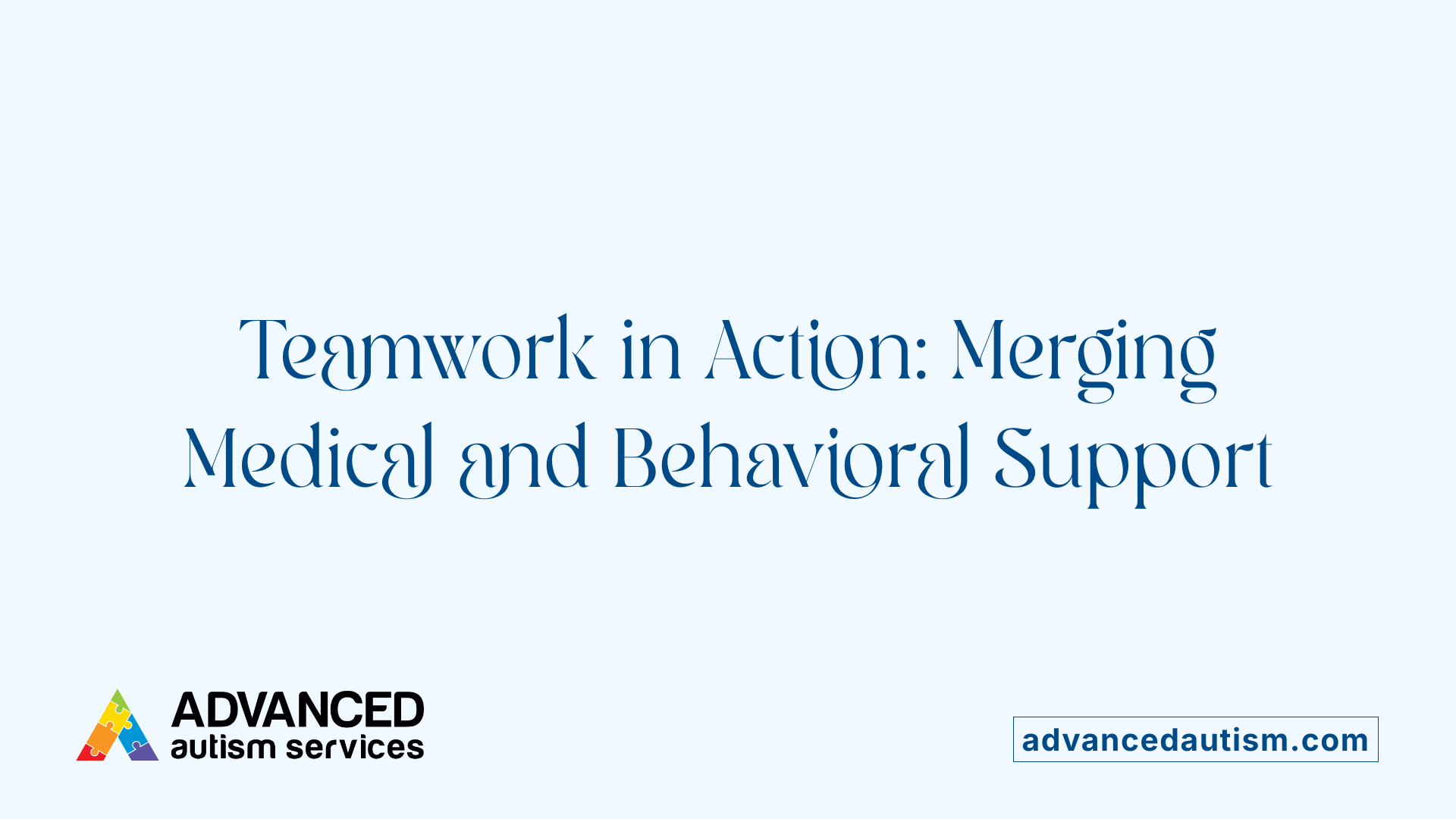Understanding the Critical Role of Unified Care in Autism Spectrum Disorder
The collaboration between ABA therapists and pediatricians is vital for delivering comprehensive and effective support to children with autism. This interdisciplinary partnership ensures early detection, personalized intervention, and ongoing developmental progress, ultimately leading to better outcomes for children and their families. Combining the expertise of medical and behavioral professionals creates a cohesive care plan that addresses each child’s unique needs, fostering significant improvements in communication, social skills, and adaptive behaviors.
The Foundations of Collaboration in Autism Treatment

Why is collaboration important in ABA therapy?
Collaboration plays a vital role in the success of Applied Behavior Analysis (ABA) therapy for children with autism. It involves a team of professionals, including Board Certified Behavior Analysts (BCBAs), ABA therapists, pediatricians, speech and occupational therapists, teachers, and families, working together to create and implement individualized treatment plans.
This teamwork ensures consistency across different environments such as home, school, and therapy sessions. When everyone is aligned, it helps children generalize skills more effectively, leading to better and more lasting improvements.
Families are central to this collaborative effort. Their active participation in therapy and reinforcement strategies at home boosts the child's learning and behavioral progress. Open communication allows team members to share observations, adjust interventions, and address emerging needs promptly.
Furthermore, this partnership supports ongoing assessment and adaptation of treatments, based on the child's evolving progress. When professionals and families work together seamlessly, the effectiveness of ABA therapy is significantly enhanced, leading to more meaningful developmental gains.
Early Screening, Accurate Diagnosis, and Coordinated Care

Why is early screening, diagnosis, and continuous support vital in autism care?
Early screening and diagnosis of autism are crucial because they allow interventions to begin during key developmental windows. During these periods, the brain is most adaptable, so targeted support can lead to meaningful improvements in social, communication, and behavioral skills.
Pediatricians play an essential role in this process. During routine visits, they perform developmental screenings using standardized tools to identify early signs of autism. Recognizing concerns like delayed speech, limited eye contact, or repetitive behaviors early on enables prompt referrals to specialists and intervention programs.
Timely diagnosis helps families access therapies such as ABA, speech, and occupational therapy sooner, which can significantly enhance developmental outcomes. It also allows for personalized care plans that evolve with the child's changing needs. Continuous monitoring ensures that interventions remain effective, guiding adjustments as the child grows.
This collaborative approach—starting with pediatric screening and moving through diagnosis, intervention, and ongoing support—aims to optimize each child's potential. Early and sustained efforts provide the best chance for children with autism to develop skills that promote independence, improve communication, and strengthen social interactions.
How do pediatricians identify early signs of autism?
Pediatricians utilize evidence-based screening tools during well-child visits to screen for Autism Spectrum Disorder (ASD). Commonly used instruments include the Modified Checklist for Autism in Toddlers (M-CHAT) and the Autism Diagnostic Observation Schedule (ADOS), which help assess developmental milestones and social behaviors.
Early signs that raise concern include lack of eye contact, delayed speech, limited response to social interactions, repetitive behaviors, and difficulty understanding social cues. Noticing these signs during routine screenings prompts further evaluation and a smoother transition to diagnostic specialists.
The importance of early referral and intervention for better outcomes
Early intervention services like ABA therapy can dramatically improve communication, social skills, and reduce challenging behaviors. When pediatricians refer families promptly after screening indicates potential autism, children are more likely to benefit from therapy during critical early years.
Research shows that children receiving early intervention tend to achieve greater progress in language development, social interactions, and daily living skills. Starting therapy early can also decrease future support needs, leading to better long-term independence.
How do pediatricians coordinate with specialists and therapists?
Pediatricians serve as central coordinators, connecting families with speech therapists, occupational therapists, psychologists, and ABA providers. They facilitate comprehensive assessments and help develop integrated care plans.
Effective communication among these professionals ensures that therapies are aligned with the child's goals. Pediatricians monitor progress, advise on medication if necessary, and support families through education and parent training.
This teamwork approach fosters a holistic treatment strategy, maximizing the child's development. Regular updates and shared information between pediatricians and specialists improve consistency and enhance the effectiveness of interventions, ensuring children receive tailored support at every stage of their growth.
| Role of Pediatricians | Types of Screenings/Tools | Interventions & Care | Collaboration Focus |
|---|---|---|---|
| Early detection of signs | M-CHAT, ADOS | Behavioral therapy (ABA), Speech, Occupational | Coordinating with specialists and families |
| Referring after screening | Developmental milestones checklist | Medication management for co-occurring conditions | Facilitating multidisciplinary communication |
| Monitoring ongoing progress | Formal assessment schedules | Parent training and support | Ensuring inclusive, continuous care |
| Educating families about ASD | Family guidance and resources | Creating home strategies and routines | Building collaborative partnerships |
Integrating Therapies for Holistic Child Development

How do ABA therapists and pediatricians work together in autism diagnosis, early intervention, and ongoing treatment?
ABA therapists and pediatricians form an essential teamwork in supporting children with autism spectrum disorder (ASD). Their collaboration begins at the screening stage, where the pediatrician uses tools like the M-CHAT to identify early signs of autism, such as limited eye contact, delayed speech, or repetitive behaviors.
Once concerns are noted, the pediatrician refers the child for comprehensive assessments by specialists like speech, occupational, or behavioral therapists. After a formal diagnosis, pediatricians help families understand treatment options, including ABA therapy. They provide information about reputable providers and coordinate care among various professionals.
During early intervention, ABA therapists craft personalized, data-driven plans that target improving communication, social skills, and managing behaviors. Pediatricians support this process by monitoring the child's overall health, development, and medication needs.
Throughout ongoing treatment, both pediatricians and ABA therapists continuously share progress updates through standardized assessments. They collaborate to modify intervention strategies, ensuring each child's unique needs are met effectively.
This teamwork enables a comprehensive approach—merging medical oversight, behavioral techniques, and family involvement—to foster lifelong skill development and improve the child's overall well-being.
| Stage | Role of Pediatrician | Role of ABA Therapist | Focus Area |
|---|---|---|---|
| Screening | Conduct developmental screening; identify early signs | N/A | Early detection, referrals |
| Diagnosis | Facilitate diagnosis process, recommend evaluations | Provide behavioral assessments, develop treatment plans | Confirming ASD, initial planning |
| Intervention | Monitor health and medication, support families | Deliver targeted ABA therapy, monitor progress | Skill development, behavior management |
| Ongoing Care | Adjust medical and developmental plans | Track progress, adapt strategies | Skill generalization, behavioral improvements |
The collaborative efforts of pediatricians and ABA therapists are vital. They ensure children with autism receive timely, personalized, and effective interventions, ultimately promoting better long-term outcomes and a higher quality of life.
The Benefits and Strategies of Multidisciplinary Teamwork
What is the importance of multidisciplinary teamwork in autism therapy?
Multidisciplinary teamwork plays a vital role in autism care because it ensures a comprehensive approach to each child's unique needs. When pediatricians, speech therapists, occupational therapists, behavioral analysts, and psychologists work together, they can coordinate assessments and interventions more effectively.
This collaboration helps to address multiple aspects of development, such as communication, social skills, behavior, and sensory processing. By sharing information and goals, team members can create cohesive treatment plans that are tailored to the child.
Family involvement is also a key component, as it helps align the therapy with the child's environment and family's priorities. Engaging families in the process reduces stress and improves treatment adherence.
How does team collaboration improve developmental outcomes?
When professionals work together, they can detect early signs of autism and implement timely interventions. For example, pediatricians conduct developmental screenings and refer children to specialists with the help of team members, leading to earlier diagnoses.
Collaborative care fosters a more consistent approach across different settings, such as home and school. It allows therapies like ABA and speech-language treatments to complement each other, reinforcing skills and making gains more stable.
Coordination also streamlines the sharing of progress data, which helps to adjust interventions promptly. This dynamic response increases the likelihood of achieving developmental milestones, improving social, communication, and daily living skills.
What are the barriers to collaboration and ways to overcome them?
Despite its benefits, collaboration faces several challenges. Limited communication, inadequate training, and systemic issues like insufficient reimbursement can hinder cooperation among providers.
School settings often pose additional barriers due to administrative challenges and lack of staff training in autism-specific strategies. Privacy laws can also complicate information sharing.
To overcome these obstacles, establishing clear communication channels and mutual understanding of roles is essential. Support from leadership in schools and clinics can promote a team-based mindset.
Providing ongoing, hands-on training in collaborative practices and cultural competence enhances team effectiveness. Utilizing technology for secure information sharing can also facilitate better coordination.
Increased awareness of the importance of interdisciplinary collaboration and dedicated resources will further strengthen partnerships, ultimately leading to better outcomes for children with autism.
| Aspect | Challenges | Solutions | Examples |
|---|---|---|---|
| Communication | Limited or inconsistent sharing | Establish regular meetings and use shared platforms | Team meetings, electronic health records |
| Training | Lack of autism-specific skills | Ongoing professional development | Workshops, in-service training |
| Systemic | Reimbursement issues | Policy advocacy and billing reforms | State programs, insurance updates |
| Institutional | School and agency barriers | Leadership support and joint protocols | Memorandums of understanding, co-location programs |
Effective collaboration leverages the strengths of each professional, maximizes resource use, and provides the child with a seamless, supportive path to development.
Enhancing Outcomes Through Effective Communication and Cultural Responsiveness
How can effective communication and collaboration between ABA therapists and pediatricians improve child outcomes?
Collaboration and clear communication between ABA therapists and pediatricians are vital in supporting children with developmental delays and autism. When these professionals work together, they create a seamless network of care that can address the child’s needs more effectively.
Pediatricians are often the first to identify early signs of autism during routine screenings. They use tools like M-CHAT and ADOS to spot developmental concerns early on. Once a potential concern is identified, pediatricians facilitate referrals to specialists and therapists, including ABA providers, speech therapists, and occupational therapists.
Regular, open communication between ABA therapists and pediatricians ensures that everyone stays informed about the child's progress and challenges. Shared assessments and goal setting allow for interventions that are aligned across different settings, like home and school.
This teamwork helps children to generalize skills learned in therapy to everyday life more successfully. For example, if an ABA therapist is working on social skills and a speech therapist is focusing on language development, coordination ensures these strategies complement each other.
Family involvement is also strengthened through transparent dialogue. When pediatricians and therapists communicate effectively, they can guide families on how to support learning at home, reinforcing therapy concepts and routines.
According to research, such integrated efforts lead to more rapid achievement of developmental milestones, better behavioral management, and improved communication skills. Children are more likely to gain independence and participate meaningfully in social interactions when their care is coordinated.
Optimal outcomes depend on fostering ongoing collaboration, establishing shared goals, and maintaining open lines of communication among all team members. This approach ensures children receive personalized, comprehensive support tailored to their unique needs, leading to better long-term developmental progress.
Fostering Collaborative Success in Autism Support
The journey to supporting children with autism is most effective when it is driven by a collaborative, multidisciplinary approach. Pediatricians, ABA therapists, speech therapists, occupational therapists, psychologists, and family members all play integral roles in creating personalized, dynamic treatment plans. Early screening, diagnosis, and continuous support hinge on seamless communication among these professionals, which enhances the child's developmental trajectory. By embracing teamwork, respecting cultural perspectives, and sharing insights, clinicians and families can optimize intervention strategies that lead to meaningful, lasting improvements in communication, behavior, and social skills, ultimately enriching the child's quality of life and future independence.
References
- Collaborating with Pediatricians: How ABA Helps - Willow Reach
- Why Pediatricians Should Consider Referring Patients for ABA ...
- Building Collaborative Partnerships between Behavior Analysts and ...
- Interagency Collaboration for Pediatric Autism Spectrum Disorder
- The Collaborative Approach: Behind the Scenes of ABA Therapy
- ABA – The Strengths of Having a Collaborative, Multi-Disciplinary ...
- Pediatricians and Autism Treatment: What You Should Know -



